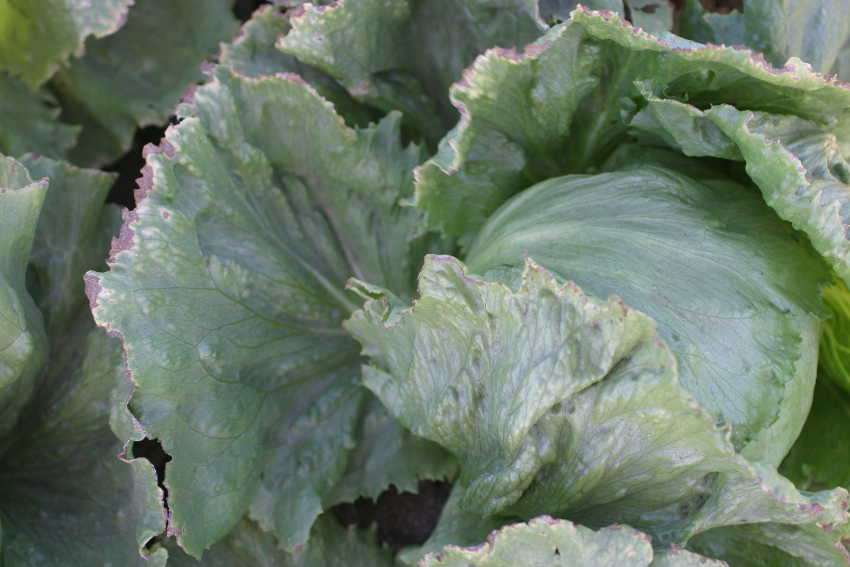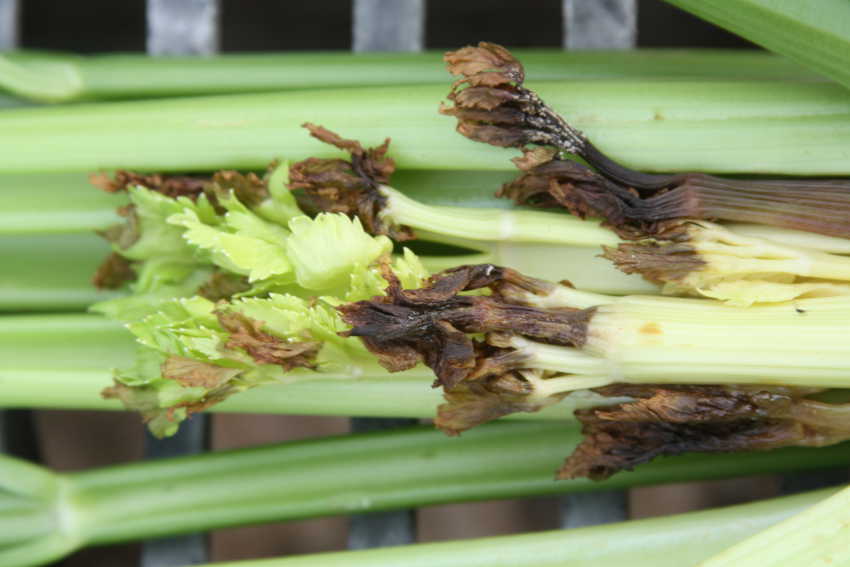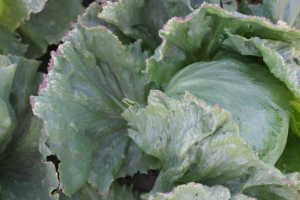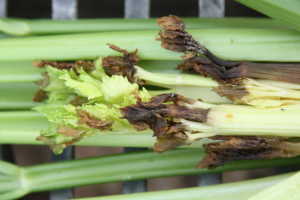Unusual Weather Creating New Challenges For Western Growers
[blackoutgallery id=”68533″]
Every growing season has unusual issues that create new challenges for vegetable growers. Vegetables are sensitive to biotic issues such as disease, insects, and weeds, but they are also susceptible to abiotic issues, such as nutritional disorders and defects caused by physiological problems.
Many of the abiotic disorders can be ephemeral and occur sporadically due to unusual weather conditions or differences in the susceptibility of different varieties. Vegetable buyers are finicky, and any issue that affects the visual quality, size, or color of the vegetables can result in rejection or downgrading of the crop. As a result, growers are concerned about even slight quality issues that affect their vegetables.
Impact Of Drought
The Salinas Valley is currently experiencing a drought, which not only affects the quantity of water available for irrigation, but also reduces the amount of leaching of salts from the soil profile that occurs with winter rains. Consequently, there were more incidences of salt-related problems in some fields of vegetables last year.
Salt issues are generally easy to diagnose and remedy. One of the key means of addressing high levels of salt in soils is to apply additional quantities of irrigation water to leach the salts from the soil (leaching fraction), which, of course, adds additional need for irrigation to a water supply already stretched thin.
Nutrition Patterns And Water Flow
Nutrient disorders occasionally occur in the Salinas Valley. The most common issue that we encounter beyond nitrogen, phosphorus, and potassium is calcium deficiency. California soils are rarely low in calcium, and calcium deficiency in vegetables is more of a physiological issue related to the movement of calcium through the plant. Calcium is drawn upward into and through the plant by the flow of water initiated by evaporation from the leaves (transpiration).
If not enough water is moving through the plant, temporary and localized calcium deficiency may occur which causes the tissue to die. These localized calcium deficiencies go by various names such as blackheart of celery, tip burn of lettuce and cabbage, or blossom end rot of tomatoes and peppers.
The flow of water through the plant can be affected by a number of factors. The weather is a key factor that affects calcium disorders on lettuce. The summer of 2014 was unusually warm; most notably, the nighttime temperatures were higher than normal.
Usually in the evening the fog comes into the Salinas Valley and cools nighttime temperatures into the 50s. However, in 2014 we experienced many nights with temperatures in the 60s from July to September. Under warm nighttime temperatures, plant cells continue to expand; however, there is little flow of water and calcium through the plant at night.
As a result, there was a high incidence of calcium deficiency in many types of vegetables this year. Affected crops included cabbage, Napa cabbage, broccoli, fennel, crisp head lettuce, artichoke, and celery, and the losses to growers ranged from incidental to loss of entire fields.
Take Precautions
So what is a grower to do about the weather? This is the age old question in farming. Of course, there is little we can do directly about the weather, but growers take precautions to hedge their bets against difficulties by choosing varieties that have resistance to disease as well as abiotic disorders.
For instance, there have been significant efforts to breed for tipburn resistance in crisp head lettuce, which has paid off very nicely. Currently, most varieties have good tolerance to tipburn which was a serious problem that plagued growers in years past.
This year of course, that tolerance was pressed to the limit given the weather conditions we experienced. Other crops have not had the level of attention placed on an issue such as tipburn and are therefore more susceptible to this issue.
The bad news is growers can’t do much about the weather. The good news is we have a sophisticated industry and efforts by the seed industry, universities, and USDA breeders can go a long way toward minimizing or eliminating abiotic, as well as many biotic issues that growers face on a daily basis.


















